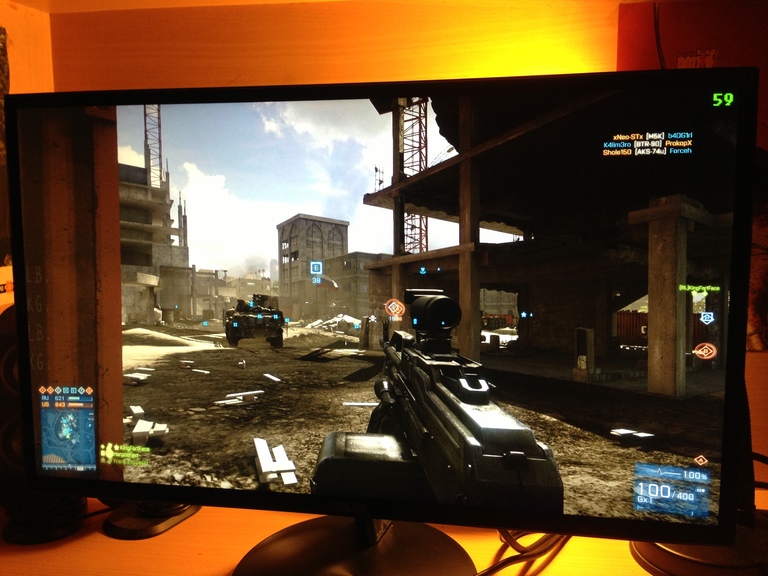Before this monitor, I though ghosting was a thing of the past.

The monitor looks good. The bezel is very thin. 1ms seemed very nice. The problem is: this monitor seems to ghost a lot. I can see this when I move my mouse around on any background (except black for some reason, but maybe that's just my eyes).
In photoshop, it was ghosting so bad than when I moved my cursor in a circle, it actually formed a full second cursor. It's that bad.
The weird part is that I've been looking at many customer reviews and people seem to be saying this monitor is in fact very good at blur/ghosting and is made for fast refresh. Why do I have these problems then? I notice it in movies and games too -> a lot of double images when you move left/right.
I've only found one person with the same problem on a different site: http://forums.overclockers.co.uk/showpost.php?p=23562134&postcount=6
I've had similar problems with other monitor so I'd say I notice stuff like this more, but how come some people have zero problems with the same monitor as me? I'd be surprised if I have a bad model since it works perfect except for the ghosting.
Tried turning trace free from 0-100 too and 0,20,40,60,80 and 100 all have this ghosting problem and it doesn't change anything either.

The monitor looks good. The bezel is very thin. 1ms seemed very nice. The problem is: this monitor seems to ghost a lot. I can see this when I move my mouse around on any background (except black for some reason, but maybe that's just my eyes).
In photoshop, it was ghosting so bad than when I moved my cursor in a circle, it actually formed a full second cursor. It's that bad.
The weird part is that I've been looking at many customer reviews and people seem to be saying this monitor is in fact very good at blur/ghosting and is made for fast refresh. Why do I have these problems then? I notice it in movies and games too -> a lot of double images when you move left/right.
I've only found one person with the same problem on a different site: http://forums.overclockers.co.uk/showpost.php?p=23562134&postcount=6
I've had similar problems with other monitor so I'd say I notice stuff like this more, but how come some people have zero problems with the same monitor as me? I'd be surprised if I have a bad model since it works perfect except for the ghosting.
Tried turning trace free from 0-100 too and 0,20,40,60,80 and 100 all have this ghosting problem and it doesn't change anything either.
![[H]ard|Forum](/styles/hardforum/xenforo/logo_dark.png)
